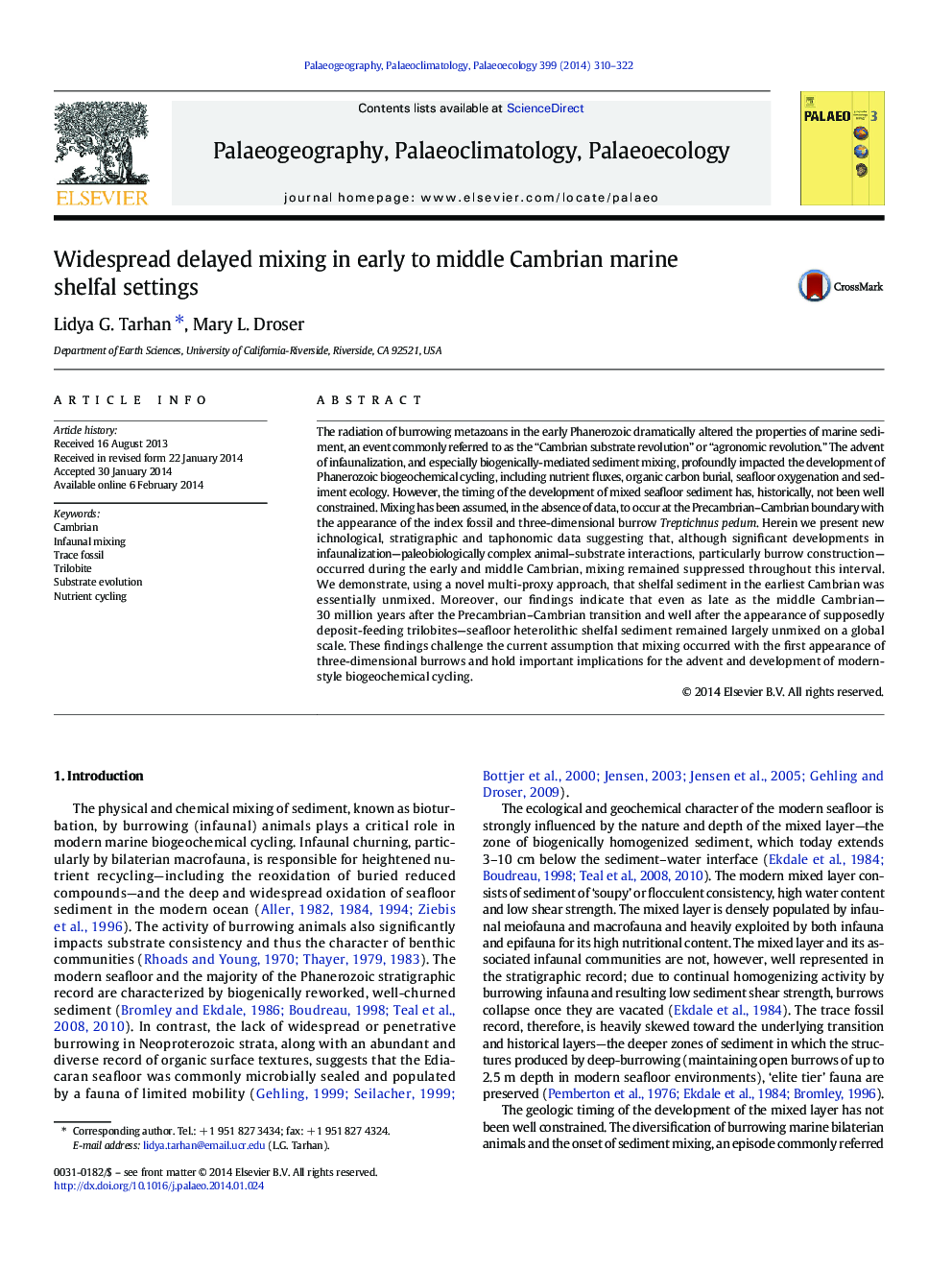| کد مقاله | کد نشریه | سال انتشار | مقاله انگلیسی | نسخه تمام متن |
|---|---|---|---|---|
| 4466315 | 1622191 | 2014 | 13 صفحه PDF | دانلود رایگان |
• We examine evidence for infaunal mixing in lower Paleozoic successions.
• Lower–middle Cambrian shelfal strata are characterized by undisrupted ichnofabrics.
• Infaunal mixing was delayed for 30 million years following the FAD of T. pedum.
• Trilobites did not contribute to early–middle Cambrian sediment mixing.
• Paleozoic marine sediment ventilation was likely protracted.
The radiation of burrowing metazoans in the early Phanerozoic dramatically altered the properties of marine sediment, an event commonly referred to as the “Cambrian substrate revolution” or “agronomic revolution.” The advent of infaunalization, and especially biogenically-mediated sediment mixing, profoundly impacted the development of Phanerozoic biogeochemical cycling, including nutrient fluxes, organic carbon burial, seafloor oxygenation and sediment ecology. However, the timing of the development of mixed seafloor sediment has, historically, not been well constrained. Mixing has been assumed, in the absence of data, to occur at the Precambrian–Cambrian boundary with the appearance of the index fossil and three-dimensional burrow Treptichnus pedum. Herein we present new ichnological, stratigraphic and taphonomic data suggesting that, although significant developments in infaunalization—paleobiologically complex animal–substrate interactions, particularly burrow construction—occurred during the early and middle Cambrian, mixing remained suppressed throughout this interval. We demonstrate, using a novel multi-proxy approach, that shelfal sediment in the earliest Cambrian was essentially unmixed. Moreover, our findings indicate that even as late as the middle Cambrian—30 million years after the Precambrian–Cambrian transition and well after the appearance of supposedly deposit-feeding trilobites—seafloor heterolithic shelfal sediment remained largely unmixed on a global scale. These findings challenge the current assumption that mixing occurred with the first appearance of three-dimensional burrows and hold important implications for the advent and development of modern-style biogeochemical cycling.
Journal: Palaeogeography, Palaeoclimatology, Palaeoecology - Volume 399, 1 April 2014, Pages 310–322
